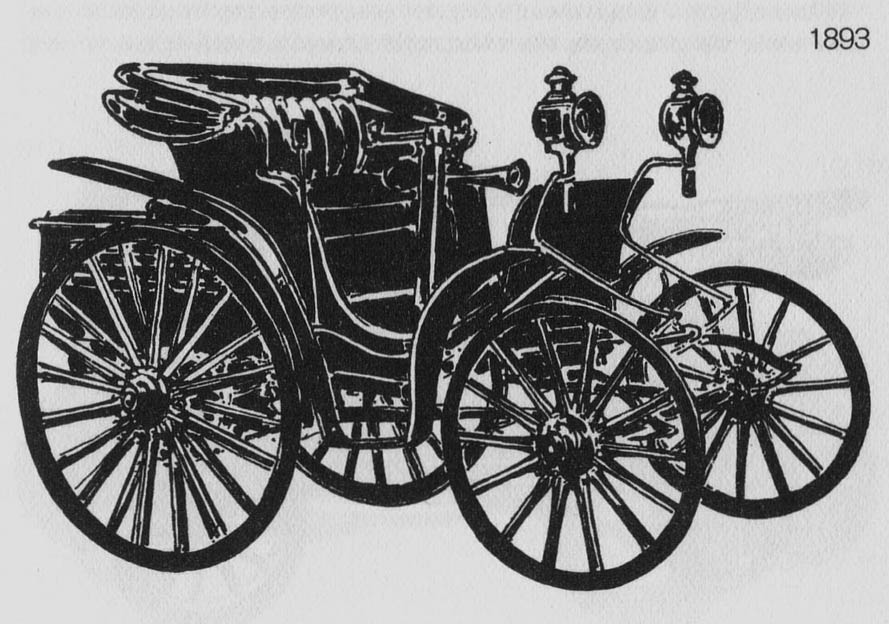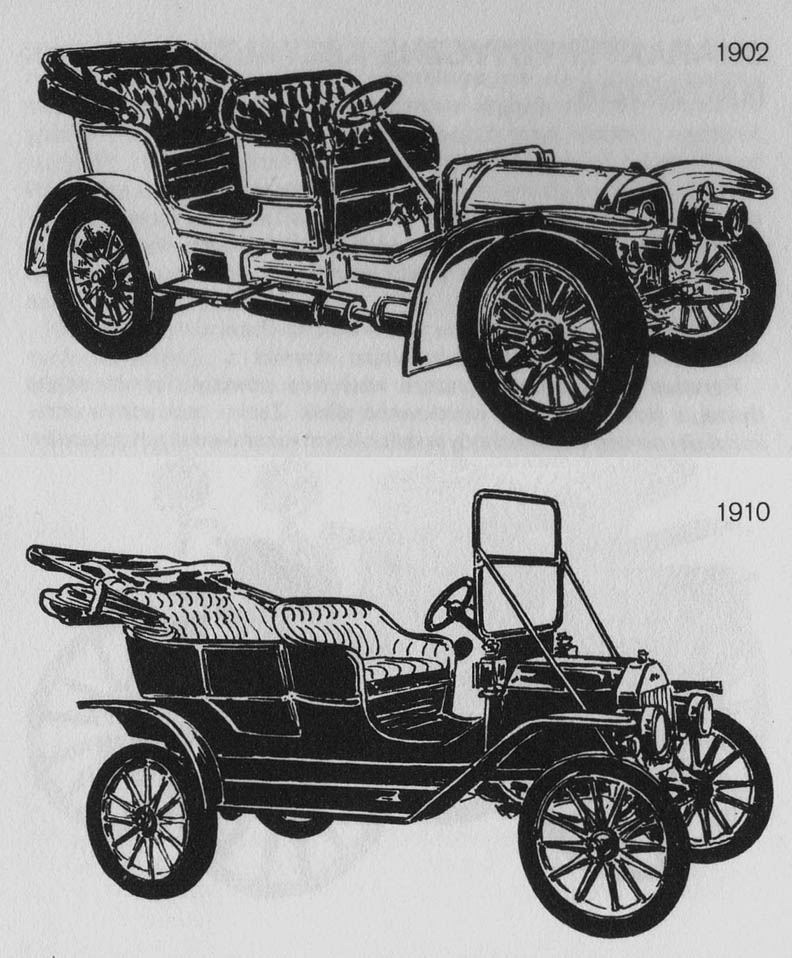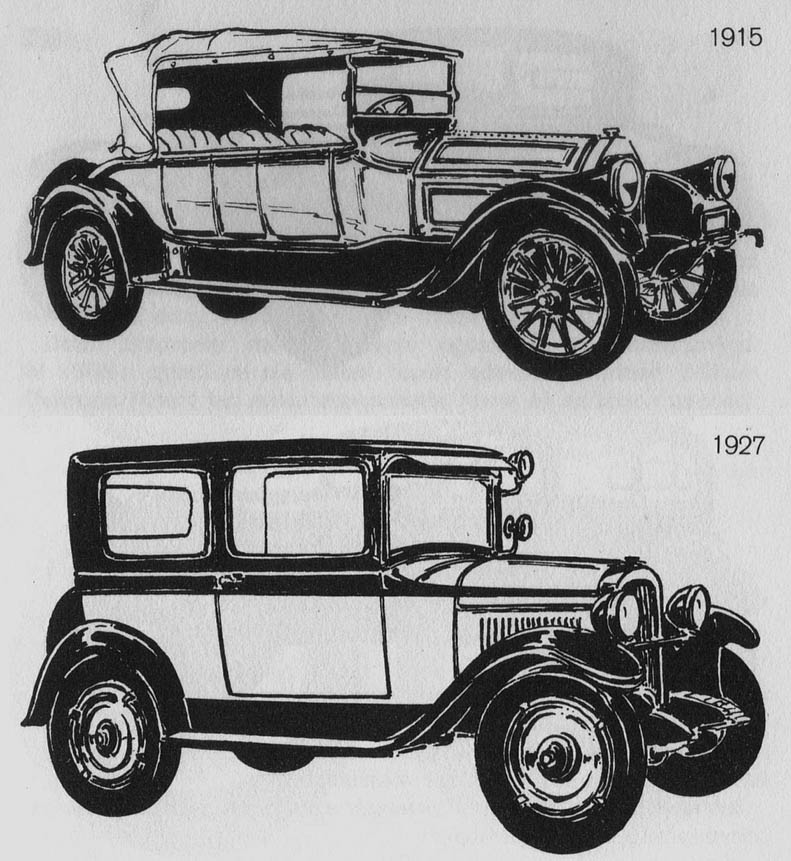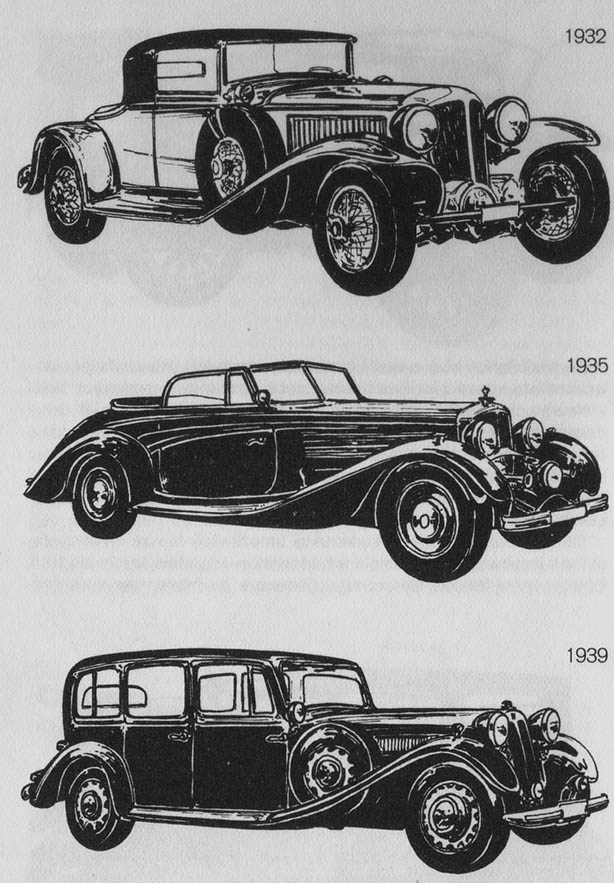The shapes of the bodies of the first cars.
The first cars are actually carriages, the drawbar is removed, and an engine is built under the seat. Before they finally turned into cars as we understand these vehicles today, there were many factors, like for example. the need to protect passengers from bad weather, different seating arrangements, decided about transformations, which the shapes of the body itself were subject to. There were many of them: vis-à-vis, facing you, dos-a-dos - back to back, landaulet, break, phaeton i inne. In the first years of the 20th century, approx 20 body types. French terms were most often used to designate them, as it was adopted in the names of carriages.

When Mercedes Simplex launched the classic front-engine design, The exterior designers set the seats in the direction of travel, creating cars with the silhouette we know today. At the same time, wood as a traditional construction material was gradually replaced with sheet metal. Various bodies were mounted on the one-piece chassis. It's hard to believe, how diverse there was in this area. In the years of this car body boom, more and more new companies specializing in the production of bodies were established.

The maximum speed of cars, which was increasing in the 1920s, led to the introduction of new details also into the body line. The car got a wedge-shaped radiator, long, fenders connected by steps, slanted windshield and closed sides.

New advances in aerodynamics in the early 1920s also influenced the body design. The streamline of the body emphasized the speed of the car. The ideal of beauty was a car with a front hood as long as possible, elegantly elongated fenders and a flowing streamline. Big, 8-cylinder in-line engines met the aesthetic requirements of the time.

More compact engines allowed better use of space in the car and the incorporation of more comfortable seats. Only the transition from the classic chassis to frameless self-supporting bodies simplified and lowered the cost of car construction, while enabling the production of large series.
The illustrations show, how the shapes of cars have changed at decisive stages of development.